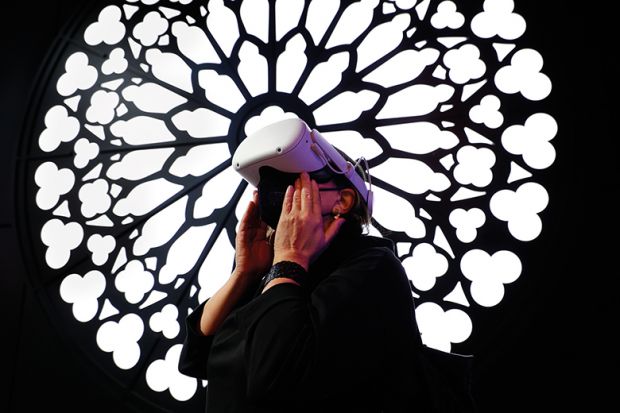“Blind spots” are the biggest danger for administrators balancing the risks and rewards from artificial intelligence (AI), according to the head of a global council helping universities and other organisations navigate the rapidly evolving technological landscape.
Danny Bielik said universities were selling themselves short if they viewed AI exclusively as a tool to aid or catch cheats. “If you think the only impact AI is going to have on your university is [around] academic integrity, then you’re really missing the picture,” said Mr Bielik, Singapore-based president of the Digital Education Council (DEC).
“It’s the blind spots that often cause the most change. Where are you looking? Where aren’t you looking? What is best practice? What are people testing in other parts of the world?”
DEC’s seven institutional founding members – in Australia, Hong Kong, Italy, Mexico, Singapore, South Africa and Spain – generate strategies and policy statements to underpin discussions with decision-makers.
Mr Bielik, a former adviser to New South Wales education minister Adrian Piccoli, said some universities were “super-focused” on generative AI’s use in cheating and had pinned their hopes on AI detection tools as an antidote.
This “whack-a-mole” approach was unlikely to work, and risked blinding administrators to other applications such as AI impersonation. “It’s only a short matter of time before people are able to generate videos that look and sound like other people and react in real time. Some…image generation [tools can] generate passports that can pass through identity checking software.
“You’ve got to take a step back and think about what a resilient educational value chain looks like and how you maintain it…from beginning to end, from all the documents that a student gives you before they arrive, to their identity, to the way that teaching and learning is done, to the way that you credential them and so on.”
An excessive focus on the dangers also risked obscuring the potential of AI in teaching and learning, through things like automated translation, predictive analytics – used to identify students at risk of failing, for example – and sentiment analysis to determine whether students understood the subject matter during online classes. AI tools could remove “some of the drudgery” from admissions and “dramatically reduce the time it takes to get an offer out”.
But educators needed to be wary of the downsides, including biased datasets and the need to handle information carefully – for example, the information amassed by a student support “chatbot”.
“Where does the data you’ve trained it with go? What happens to the data that the students provide when they ask questions? Where is it located? Who has access to it? These are sometimes questions that universities are not prepared to ask. Or…when they get the answer, they’re not prepared to deal with it.”
Nevertheless, universities could not afford to ignore AI because it was revolutionising many of the disciplines they taught, from medicine to information technology. Students denied insights into these changes faced a “complete mismatch” between their subject knowledge and workplace realities after they graduated.
“Regulatory, technological, pedagogical, societal – you need to be aware of it on all of these levels,” Mr Bielik said.
POSTSCRIPT:
Print headline: AI ‘blind spots’ hide risks and limit potential rewards for HE
Register to continue
Why register?
- Registration is free and only takes a moment
- Once registered, you can read 3 articles a month
- Sign up for our newsletter
Subscribe
Or subscribe for unlimited access to:
- Unlimited access to news, views, insights & reviews
- Digital editions
- Digital access to THE’s university and college rankings analysis
Already registered or a current subscriber? Login








